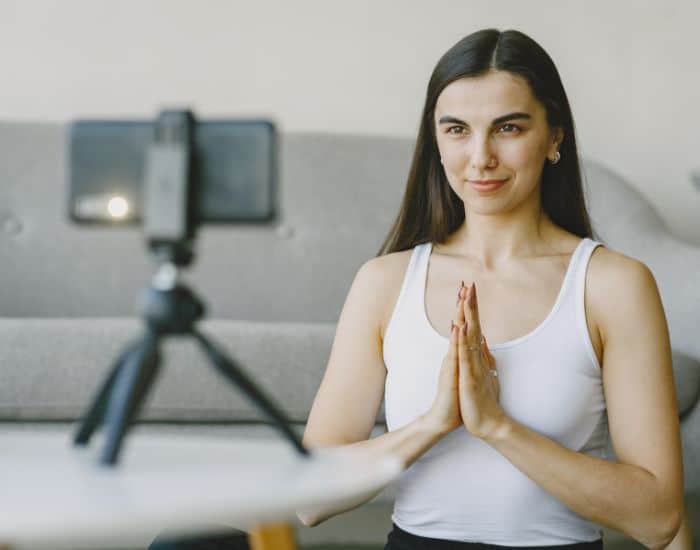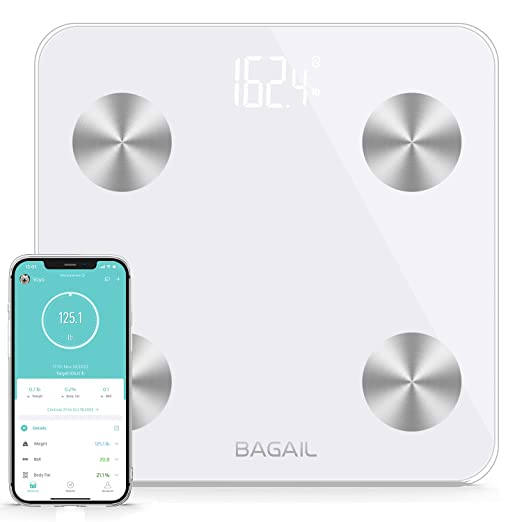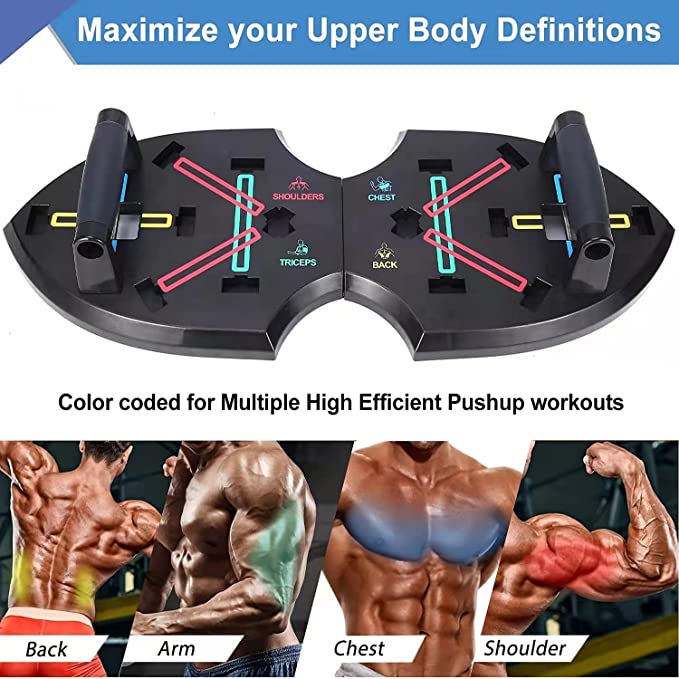Recording your individual guided meditation is a strong strategy to share mindfulness with others — and it’s easier than you may think. Whether you’re trying to help others calm down, deepen their awareness, or just bring a relaxing presence into their day, this guide will walk you thru every step of the method.
Drawing on the teachings of Sean Fargo — former Buddhist monk, mindfulness teacher, and founding father of Mindfulness Exercises — this text highlights the important thing practices and guidance he offers to assist others record meaningful, high-quality meditations.
Whether you’re just getting began or able to upgrade your setup, you’ll find clear, practical steps to guide your journey.
The way to Record a Meditation: Step-by-Step
1. Preparing for Your Meditation Recording: Setting Yourself Up for Success
A meditation recording isn’t nearly equipment and software; it’s about creating the best environment and ensuring you might be mentally prepared. As Sean Fargo emphasizes, mindfulness and intention are at the center of each meditation, including the recording process. Let’s start with how you possibly can prepare:
Craft Your Meditation Script: A Roadmap to Clarity
A well-written script is the inspiration of any effective guided meditation. Sean Fargo often advises teachers to develop a script that aligns with the core principles of mindfulness — presence, awareness, and compassion. A script provides structure and clarity for each you and your listeners.
- Select Your Theme: Your meditation must have a transparent purpose. Whether it’s for rest, stress relief, self-compassion, or mindfulness, make sure the theme is restricted. Themes can include “Mindfulness of Breath,” “Loving-Kindness Meditation,” or “Body Scan for Rest.”
- Develop the Structure: Think in regards to the flow of the meditation. Start with a temporary introduction to set the intention, followed by the body of the meditation, and shut with a mild transition back to awareness. The body should guide the listener through the practice, using sensory cues (respiratory, body sensations, etc.).
- Incorporate Pauses and Silence: Silence is a strong tool in any meditation. Use strategic pauses to provide your listeners time to soak up and reflect in your words. Sean Fargo often highlights that silence in meditation is a strategy to deepen awareness and create space for insight.
Best Tools:
Preparing Your Environment: The Heart of a Clear Recording
Your recording environment is just as vital as your equipment. Even with the very best gear, poor acoustics or a loud environment can damage a recording. Here’s the right way to optimize your space:
- Select a Quiet Room: Select an area that is of course quiet. Avoid areas with significant noise (traffic, busy streets, or loud household appliances). A small, carpeted room or a walk-in closet may help reduce external sounds.
- Minimize Echo: Large, empty rooms are inclined to have echoes that may muddle your voice. For soundproofing, place soft materials like blankets, pillows, or towels across the space to soak up sound.
- Eliminate Distractions: Turn off all notifications and mute your phone. Make sure that nobody will interrupt you in the course of the recording. As Sean Fargo advises, mindfulness involves being present — this includes being present during your recording process.
Best Tools:
- Noisli: Helps mask environmental noise during preparation, and might test in case your room is quiet enough.
2. Choosing the Right Equipment: The Tools You Need for Skilled Sound
The equipment you select could make an enormous difference in the standard of your meditation recording. While top-tier microphones and expensive software can be found, many creators successfully record high-quality meditations on a budget.
Microphones: The Key to Clear, Skilled Audio
Your microphone is arguably an important piece of kit for recording guided meditations. Below are some advisable microphones based on different budgets:
Entry-Level: USB Microphones
- Audio-Technica ATR2100x-USB: Known for its crisp, clear sound and versatile USB connection, that is a reasonable option for those starting out.
- Blue Yeti: A very talked-about alternative for beginners and intermediate users. It’s easy to make use of, plugs directly into your computer, and offers multiple patterns (cardioid, omnidirectional), making it versatile for various recording situations.
Mid-Range to Skilled:
- Shure SM7B: A dynamic microphone that produces warm, wealthy vocals with minimal background noise. It’s a studio-standard mic utilized by professionals for voice recordings.
- Rode NT1-A: This condenser microphone captures high-quality vocals, making it ideal for individuals who want more detail and clarity of their voice recordings. It’s more sensitive than dynamic microphones and is great for capturing subtle sounds.
- Audio-Technica AT2020: An ideal condenser mic for those on the lookout for skilled quality sound at a mid-range price.
Tip: For many who go for dynamic microphones just like the SM7B, bear in mind that they require an audio interface (e.g., Focusrite Scarlett 2i2) to convert analog signals into digital.
Audio Interfaces (For XLR Microphones)
Should you are using knowledgeable XLR microphone, you will have an audio interface to attach the microphone to your computer.
- Focusrite Scarlett 2i2: An inexpensive and high-quality option for converting analog signals from XLR mics to digital.
- PreSonus AudioBox USB 96: One other great option for audio interfaces, especially for beginners, offering clear sound and ease of use.
3. Recording Your Meditation: Step-by-Step Instructions
Once your environment is ready up and your equipment is in place, it’s time to begin recording. That is where the true magic happens. Recording a meditation requires patience and mindfulness, each for the teacher and the listener.
Positioning Yourself and Your Microphone for Optimal Sound
The position of your microphone and yourself plays a critical role in capturing clear, skilled audio:
- Microphone Distance: Position the microphone 4-6 inches away out of your mouth. That is the optimal distance for clear sound without picking up respiratory or other unwanted noises.
- Seated Comfortably: Sit up together with your feet flat on the bottom. Proper posture will help your voice project clearly without strain, and may even help together with your respiratory, which is crucial for a relaxed, grounded recording.
Voice and Delivery Suggestions for Guided Meditation
- Speak Slowly and Calmly: Meditations require a slower pace to assist listeners calm down. Speak gently, giving each instruction time to sink in.
- Use Pauses: Use intentional pauses between instructions. These moments of silence allow listeners to soak up the practice and deepen their experience.
- Stay Present: Meditation is about presence, so stay connected to the moment as you record. As Sean Fargo often says, be mindful of the way you lead, knowing your voice carries the essence of the practice.
Tip: Record in small segments. This helps if it is advisable re-record sections or remove background noise. It also makes editing easier.
Best Tools:
- Audacity (Free, Windows/Mac/Linux): Easy, reliable audio recording and editing software.
- GarageBand (Mac only): Great for Apple users; clean interface and supports multi-track recording.
4. Editing Your Meditation: Refining Your Recording
Once your meditation is recorded, the following step is editing. That is where you clean up your recording and be sure that the ultimate product is polished and skilled.
Editing for Quality Sound
Use your editing software (e.g., Audacity, GarageBand) to reinforce your recording. Here’s what you possibly can do:
- Noise Reduction: Use noise reduction tools to remove background hums, clicks, or any ambient sounds that distract out of your meditation. Audacity’s noise removal tool is especially effective at this.
- Equalization (EQ): Adjust the frequency of your voice to reinforce clarity and heat. Give attention to boosting mid-range frequencies and cutting harsh high frequencies which may make your voice sound too sharp.
- Compression: Use a compressor to even out the amount levels in your recording, ensuring that no part is simply too loud or too quiet. This keeps the listener’s experience smooth and uninterrupted.
Best Tools:
- iZotope RX Elements: Incredible for removing noise, mouth clicks, and reverb — especially useful for meditation vocals.
- Descript: Edit audio by editing the text transcript — great for fixing small mistakes quickly.
- Auphonic: Robotically levels audio, removes noise, and optimizes file output quality. Perfect for non-tech users.
- Audacity / GarageBand (again): Still useful here if you happen to’re handling basic edits manually.
Adding Background Music: Enhance the Experience
Should you resolve to incorporate background music, select soothing, royalty-free music that enhances your meditation’s tone. Music can enhance the emotional depth of your meditation and guide listeners right into a deeper state of rest.
- Envato Elements: Offers a wide range of royalty-free music.
- Free Music Archive: An ideal resource at no cost tracks.
At all times ensure that the music doesn’t overpower your voice. Use software to fade the music out and in, and adjust the amount level in order that your voice is at all times clear.
Best Tools:
- Envato Elements: Wide library of royalty-free meditation music. Paid subscription required.
- Free Music Archive (FMA): Free, high-quality audio files for non-commercial or attribution-required use.
5. Exporting and Publishing Your Meditation: Sharing Your Creation
Now that your meditation is edited, it’s time to share it. Here’s the right way to ensure your meditation is accessible and able to be heard by your audience.
File Formats for Optimal Quality
- WAV: For the best quality, export your file as a WAV. Nevertheless, it’s a bigger file and is probably not compatible with all platforms.
- MP3: Essentially the most common format for sharing, MP3 files are compressed but still offer good sound quality for meditations.
Where to Publish Your Meditation
- YouTube: Upload your meditation to YouTube as a video, even when it’s only a static image. YouTube’s massive reach can provide help to grow your audience.
- SoundCloud: One other great option for sharing audio. It also offers a simple strategy to embed audio files in your website.
- Your Website: Create a dedicated page to your meditations, where visitors can listen and download the recordings.
For selling, consider platforms like Gumroad, Patreon, or Kajabi to sell your meditations or offer them through a subscription model.
Best Tools:
- Anchor.fm: Free podcast distribution platform that uploads to Spotify, Apple, etc. Ideal for recurring meditations.
- YouTube + Canva (for visuals): Create easy visual slides or a thumbnail in Canva and upload your meditation as a static video.
6. Monetizing Your Meditations: Turning Your Passion into Profit
If you wish to take it a step further and make your meditations a source of income, there are several ways to monetize your content:
- Sell Your Meditations: Use platforms like Gumroad to sell individual recordings or bundles.
- Offer Private Meditations via Subscription: Services like Patreon mean you can offer exclusive meditations to paying subscribers.
- Create an Online Course: Package your meditations right into a structured course or series for deeper engagement.
Can I Record a Meditation Using Just My Smartphone?
Absolutely. You don’t need a full recording studio to begin creating guided meditations — your smartphone is usually a powerful tool. Many beginner teachers and mindfulness practitioners start through the use of apps that turn their phone right into a high-quality recorder. With a quiet room, a well-prepared script, and mindful delivery, your phone can capture surprisingly clear and calming audio.
Here’s the right way to take advantage of your smartphone:
Suggestions for High-Quality Smartphone Meditation Recordings
- Use a recording app built for clean audio (see below)
- Avoid holding your phone while speaking — use a stand to reduce movement noise
- Sit in a quiet, carpeted space to cut back echo
- Speak 4–6 inches from the mic — but not too near avoid breath pops
- Record in airplane mode to avoid interruptions
Best Apps for Recording Meditation on Your Phone
Listed here are some free and paid apps that provide help to record high-quality voice audio:
- Dolby On: Robotically enhances your voice, reduces background noise, and even adds subtle mastering effects.
- Voice Recorder Pro (iOS): A strong app for iPhone users with high-quality output and advanced file export options.
- Easy Voice Recorder (Android): Clean interface, good quality audio, and simple file sharing.
- Anchor by Spotify: Designed for podcasts, but great for meditations — permits you to record, edit, and publish on to Spotify.
FAQ: Guided Meditation Recording
What’s the best length for a meditation recording?
Most guided meditations range from 5 to twenty minutes. Shorter meditations (5–10 minutes) are great for beginners, while longer ones can support deeper practice.
How long should a guided meditation be?
It will depend on your audience, but most range from 5 to twenty minutes. Start with 5–10 minutes for beginners and extend once you are feeling more confident.
Do I must be a trained teacher to record a meditation?
Under no circumstances. Anyone with a sincere mindfulness practice and the will to guide others can start. That said, training (just like the Mindfulness Exercises Teacher Program) can provide help to grow in confidence and skill.
Should I script the whole lot or improvise?
Beginners should start with a script to make sure flow and clarity. As you gain experience, you might feel comfortable improvising based in your practice.
What are the common mistakes to avoid?
Talking too quickly, recording in a loud environment, or using overpowering background music are common issues. At all times listen back with headphones to make sure clarity and calm delivery.
Conclusion
Recording your individual meditations is just not only possible but will be incredibly rewarding. By following the steps outlined on this guide, inspired by Sean Fargo’s mindfulness teachings, you’ll have the ability to create and share professional-quality meditations with the world. Whether you’re using a smartphone or a high-end microphone, this guide has provided you with all of the tools it is advisable succeed. Joyful recording, and should your voice bring peace and mindfulness to many!







